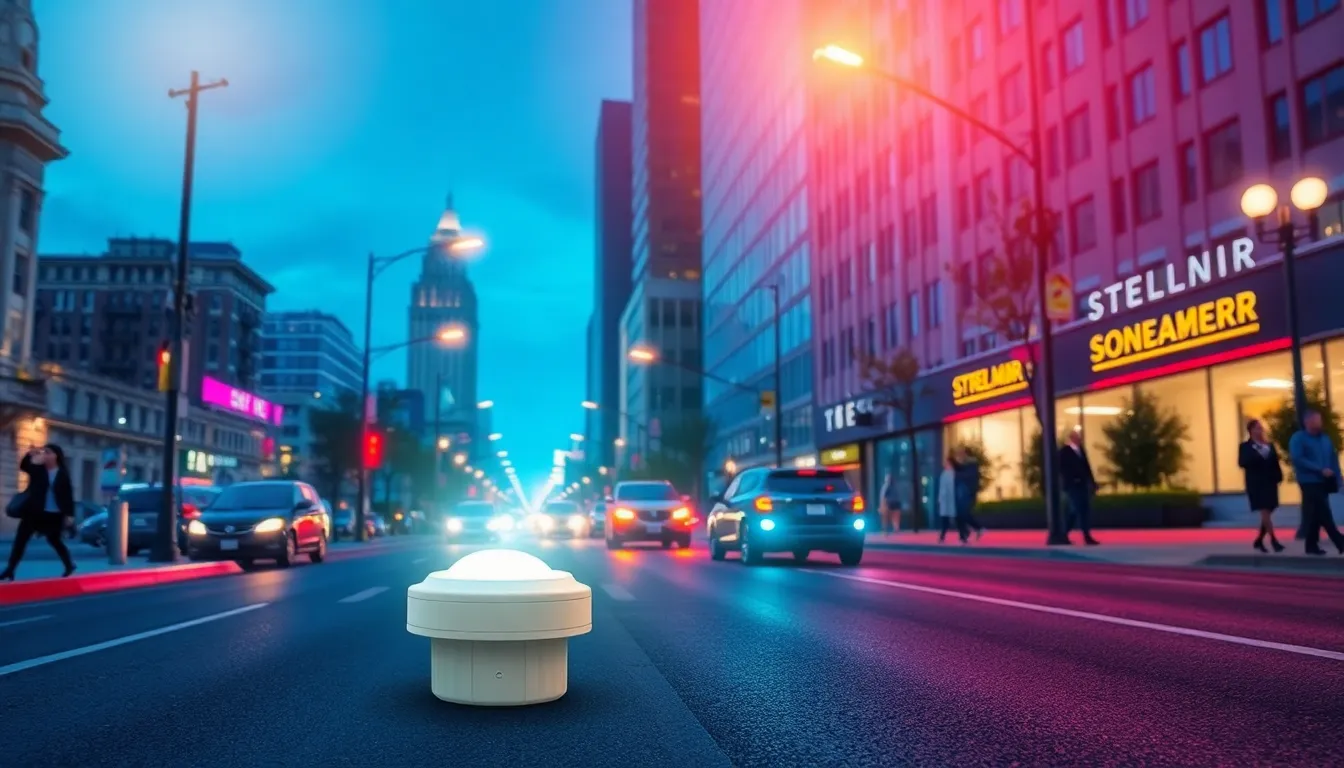Imagine a city where traffic lights know when to change based on real-time traffic flow and garbage bins signal when they need emptying. Welcome to the world of smart cities powered by the Internet of Things (IoT). It’s not just a futuristic dream; it’s happening right now.
Table of Contents
ToggleUnderstanding The Internet Of Things
The Internet of Things (IoT) plays a crucial role in the development of smart cities. These interconnected devices collect and share data, improving decision-making and resource management.
Definition And Key Components
IoT refers to the network of devices connected to the internet, allowing them to communicate and exchange information. Sensors, software, and other technologies form the backbone of IoT systems. Connected vehicles, smart streetlights, and environmental sensors exemplify key components of an IoT ecosystem. Data collected from these devices facilitates real-time analysis, enhancing urban infrastructure and services. Each device contributes valuable insights for improving city management and residents’ quality of life.
Importance In Today’s Technology
IoT’s significance continues to grow in modern urban environments. Enhanced efficiency emerges from improved resource allocation, reducing operational costs for city services. Real-time data allows for better responses to emergencies, traffic management, and waste disposal. Cities adopting IoT technologies experience increased sustainability and improved public services. As urban populations rise, the demand for smart solutions becomes essential. Optimizing infrastructure through IoT leads to better living conditions for citizens and supports overall economic growth.
Role Of Internet Of Things In Smart Cities

The Internet of Things significantly transforms urban environments. Smart devices facilitate communication between systems, enhancing the functionality of cities.
Enhancing Urban Infrastructure
Smart sensors improve road maintenance and safety. These devices monitor structural health, detecting issues in bridges and buildings. Real-time data allows city planners to address problems proactively, minimizing risks. Connected vehicles share information with traffic management systems, optimizing traffic flow and reducing congestion. Smart streetlights adjust brightness based on pedestrian activity, conserving energy while increasing public safety.
Improving Public Services
IoT technology streamlines public service delivery. Smart waste management systems notify operators when bins require emptying, optimizing collection routes and reducing costs. Real-time monitoring of air quality enables authorities to take immediate action against pollution. Emergency services can access live data from various city departments, allowing for quicker response times during crises. Overall, IoT enhances the efficiency of services, ensuring a better quality of life for residents.
Benefits Of Implementing IoT In Smart Cities
IoT technology brings numerous advantages to smart cities. Enhanced resource management and improved service delivery characterize these advancements.
Increased Efficiency And Sustainability
Efficient use of resources becomes possible through IoT integration. Smart energy grids monitor consumption patterns, helping reduce waste. Collecting data from smart meters allows cities to optimize energy distribution, lowering costs for residents. Traffic management systems enhance travel times by analyzing real-time traffic data, minimizing congestion. Waste management uses sensors in bins to monitor fill levels, ensuring timely pickups and reducing unnecessary routes. Such improvements contribute to lower carbon footprints, promoting environmental sustainability.
Enhancing Quality Of Life
Quality of life improves significantly in smart cities. Smart public transportation systems provide residents with real-time information, ensuring timely arrivals and departures. Access to real-time air quality data allows citizens to make informed decisions regarding outdoor activities. Incorporating smart streetlights enhances safety, as lighting adjusts based on pedestrian activity. Emergency services can respond faster thanks to real-time data access, facilitating quicker assistance during crises. Overall, these features create a safer and more enjoyable urban experience for residents.
Challenges And Considerations
Implementing the Internet of Things in smart cities presents several challenges. Addressing security and privacy is critical.
Security And Privacy Concerns
Data protection remains a top priority. IoT devices often handle sensitive information, making them attractive targets for cyber threats. Cities must deploy robust cybersecurity measures to safeguard networks. Users should also be informed about how their data is processed and used. Without transparency, public trust diminishes. Additionally, creating regulations that protect citizens while allowing innovation is essential for successful IoT integration.
Integration With Existing Systems
Merging IoT solutions with current infrastructure presents complexities. Cities rely on a variety of legacy systems that may not readily support new technologies. Compatibility issues can hinder effective data sharing, making it necessary to evaluate existing technologies. Planning for gradual integration can minimize disruptions and enhance overall functionality. Stakeholders must collaborate to design agile systems that adapt to smart technologies. Achieving seamless integration drives the success of IoT initiatives in urban environments.
Future Trends In Internet Of Things For Smart Cities
Smart cities will evolve through advanced IoT applications and innovations that drive sustainability and efficiency. The future promises transformative changes, as these technologies reshape urban living.
Innovations On The Horizon
Innovative platforms will emerge, integrating AI with IoT to create intelligent decision-making systems. Autonomous vehicles will communicate with traffic management systems, optimizing routes and reducing congestion. Smart farming initiatives will utilize IoT for precision agriculture, improving food security in urban environments. Advanced sustainable energy solutions will arise, focusing on smart grids that enhance energy efficiency while minimizing waste. Personal health monitoring devices will connect within urban infrastructures, promoting public wellness through real-time data access. These trends illustrate the potential for enhanced connectivity and improved quality of life in smart cities.
Potential Impacts On Urban Development
Urban development will undergo significant changes, emphasizing resource optimization and data-driven decision-making. Enhanced public transportation systems will provide efficient route planning, reducing commute times. Gentrification patterns may shift as cities invest in sustainable infrastructure, making urban areas more attractive to businesses and residents. Furthermore, smart city initiatives can lead to improved emergency response systems that decrease response times and enhance public safety. Economic growth will follow as more businesses embrace IoT technologies to streamline operations. Overall, smart cities will support healthier, more vibrant, and resilient urban ecosystems, shaping the way communities interact with their environments.
The integration of IoT in smart cities marks a significant leap toward more efficient and sustainable urban living. As cities embrace these technologies, they pave the way for enhanced resource management and improved public services. The potential for real-time data analysis transforms how urban environments operate, creating safer and more enjoyable experiences for residents.
While challenges like security and infrastructure integration remain, the benefits of IoT are undeniable. Future advancements promise to further revolutionize urban life, making cities not only smarter but also more resilient. The journey toward smart cities is just beginning, and its impact on community dynamics and quality of life will be profound.




